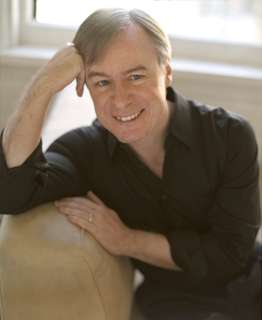|
Back
Invitation to the Dance New York
Avery Fisher Hall, Lincoln Center
02/18/2010 - & Feb. 19, 20, 2010
George Benjamin: Dance Figures: Nine Choreographic Scenes for Orchestra
Claude Debussy: Prelude to the Afternoon of a Faun
Maurice Ravel: Concerto for the Left Hand
Alberto Ginastera: Dances from the Ballet “Estancia”, opus 8a
Nicolas Hodges (Piano)
New York Philharmonic Orchestra, David Robertson (Conductor)

D. Robertson (© Michael Tammaro)
A fishing-rod reel is rarely called for in an orchestra, though it is not unprecedented. Fishing-rod reels were prominent in Haydn’s “Salmon” symphonies, operatic Bass arias, Mendelssohn’s Clam Seas and Prosperous Voyage, and most prominently in Schubert’s “Trout” Quintet.
With George Benjamin’s Dance Figures, the tool is part of the orchestra, but alas, I could spot it only in one of the nine dances. A great waste. (The second waste being that Mr. Benjamin offered as replacement “a very quiet ratchet”, which I believe was used.) Still, at first herring….or, hearing, Mr. Benjamin, English by birth, but French in training, has produced a work of clarity, brilliant painting and, above all, excellent spirits.
The clarity comes in rhythmic jolts in the mysterious overtones from the quiet first dance. These were followed up with more quiet sections where one could spot a repetition of those motifs, but with more fascinating orchestration. The orchestral tumult reached one climax in the fourth dance. This was a gorgeous display of the entire orchestra, horns rumbling, string players partly plucking, partly rolling across the strings, and the winds sending virtuoso flourishes across the entire canvas. This was repeated again two dances later, and the entire work climaxed with the most beautiful celesta solo.
Yet so seductive were these colors that any attentive listener might have wanted to hear more, to discover the relationships of the motifs. And that would call for another performance. It was short enough, and attractive enough on first hearing that conductor David Robertson might have given this as an encore. But alas, we shall have to wait for another day.
While only two of the works last night were French, the entire program had a French overlay. Mr. Benjamin’s study with Olivier Messiaen, conductor Robertson’s long sojourn in Lyon and Paris and piano soloist Nicolas Hodges, also a Francophile, who frequently expresses a love affair with Ravel’s music.
This was Mr. Hodges’ New York premiere, and his partnership with Mr. Robertson in the Concerto for the Left Hand was a fortuitous one. The pianist is a meticulous performer, and he molded the work like a sculptor. One would have expected a greater bite in the opening, a little more snap in the orchestra after the cadenza. But Mr. Hodges was a bit sedate here. He was more in character for the dreamydelicate adagio. Finally, that last movement, had all the essential diabolism needed. Both pianist and orchestra were spirited, jazzy and free-wheeling.
The two other works were obvious crowd-pleasers, but hardly unmerited. Debussy’s Afternoon was given a sensuous reading with some lovely playing by Principal Flutist Robert Langevin, and some other lovely woodwind playing.
Alberto Ginastera, like his Italian-Argentine colleague Astor Piazzolla, took advantage of Argentina’s diverse rhythms. Piazzolla confined himself to the tango, but Ginastera loved all the dances. Three of the four here were atmospheric, colorful, quite balletic. The last one bounced up and down with never-ending bass drum and timpani pounding, infinite false endings and the kind of tumultuous ending which guaranteed audience huzzahs!
Harry Rolnick
|